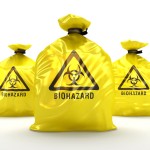Today I got a mini-brochure in the mail from the American Medical Association, AKA the AMA, offering the CPT 2013 Professional Edition and the ICD-9-CM 2013 Professional Edition with a special offer; more than 40% off if I order both by September 1, 2012. That's $114.66 versus the package list price of $202.90. WOW!
Okay, what are those things and why would I (or rather a physician still seeing patients) want them? CPT is the acronym for Current Procedural Terminology, a series of numeric codes developed and periodically updated by the AMA that are used for billing patients or insurance companies for each and every service that a doc may provide to a non-Medicare patient. If the person seen by a physician is over 65 (or is otherwise eligible for Medicare), then a set of codes called HCPCS are used for billing purposes. The acronym stands for Healthcare Common Procedure Coding System. Level I HCPCS codes are identical to CPT codes. Level II codes cover things that don't usually get billed by a physician such as ambulance services or durable medical equipment. Medicare and Medicaid handle those differently than insurance companies do.
But I want to focus on Mental Health issues and eventually get into two other sets of handbooks, both with their own codes. So first some history.
The initial development of MH illness groupings in the US dates back to the 1840 census when a category for "idiocy/insanity" was added. Forty years later, census data included seven MH entities, some of which would be classified as medical diseases now (e.g., epilepsy).
There's a nice history of the DSM itself on an American Psychiatric Association (APA) website. It's been an amazing saga leading to multiple disputes and perhaps even some acrimony. Basically WW II heavily influenced the development of the DSM and, for that matter, the ICD. It was the first time large numbers of US psychiatrists, headed by Brigadier General William Menninger, got directly engaged in all aspects of military personnel selection, processing, assessment and treatment.
Medical 203, a brand new classification of MH disorders came out in 1943 as a War Department Technical Bulletin. All the Armed Forces and, with slight alterations, the Veterans Administration, adopted this nomenclature. When psychiatrists returned to private practice, after the War, they brought Medical 203 to their hospitals and clinics.
The World Health Organization added MH diagnoses in their International Classification of Diseases (ICD) with the 6th revision in 1949. Prior to that the ICD had primarily been used to classify the causes of death in various populations, an effort dating back at least to the mid 1850s.
The forward to DSM-I mentions the ICD-6 "categorized mental disorders in rubrics {names, titles, groups} similar to those of the Armed Services nomenclature." But the APA formed a committee to standardize a version to be used in the Untied States. A tenth of the total membership of the APA eventually had a chance to voice their opinions and over 90% liked the adaptation, eventually titled the Diagnostic and Statistical Manual of Mental Disorders, DSM for short.
In 1998, L.J. (Lawrence) Davis, a long-term writer and contributing editor for Harper's Magazine, published an article titled, "The Encyclopedia of Insanity: A Psychiatric Handbook lists a madness for everyone." He was referring, of course, to the DSM, in this case to DSM-IV.It's a harsh critique, saying the DSM was dogmatic with a theme that we're all either crazy or about to be, but treatable, by guess who...the selfsame authors of the 866-page-long book.
So there have been numerous versions of the ICD and we're about to see DSM-V in May of 2013. Both have billing codes which are identical in large part. Most psychologists use DSM, but third-party payers use the American version of ICD-9-CM (the CM stands for Clinical Modification).
But there's still controversy and disagreement and the HHS Secretary announced that as of October 1, 2013, the ICD-10-CM codes must be used. The rest of the world has used these since 1990.
Yet DSM-V is supposedly coming out in May, 2013 and ICD-11 is due in 2014.















